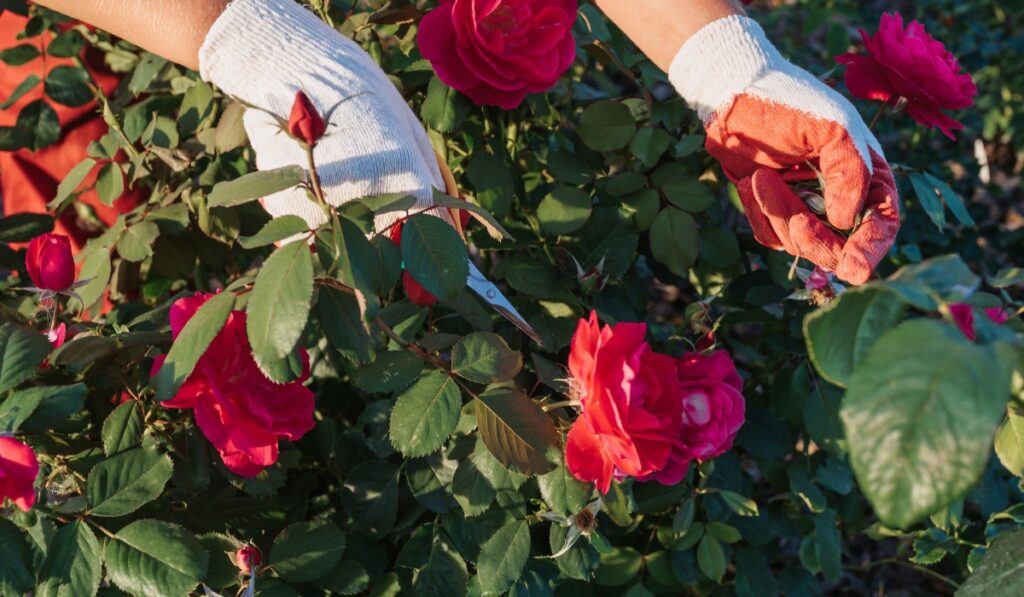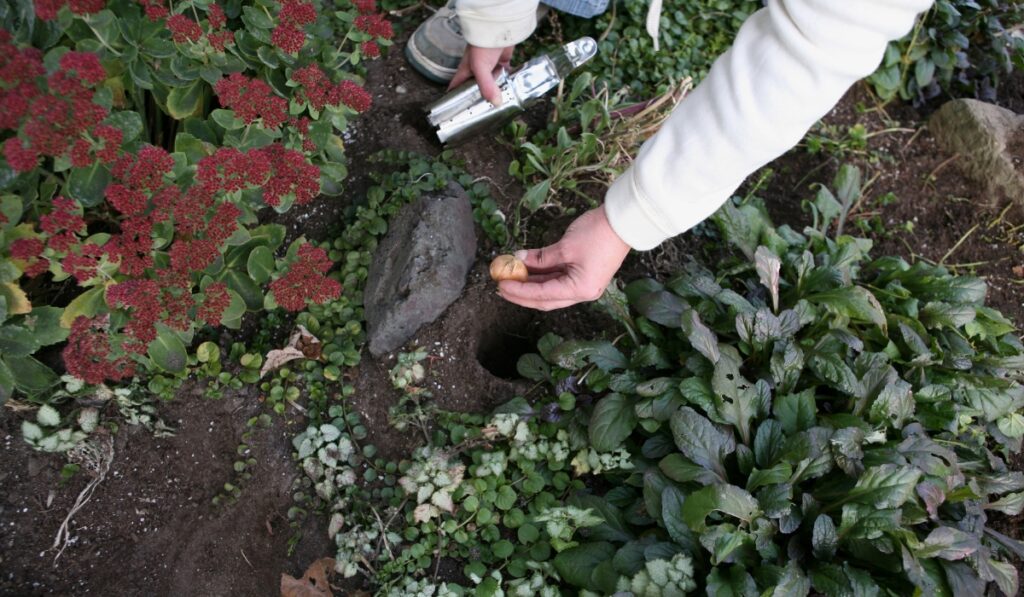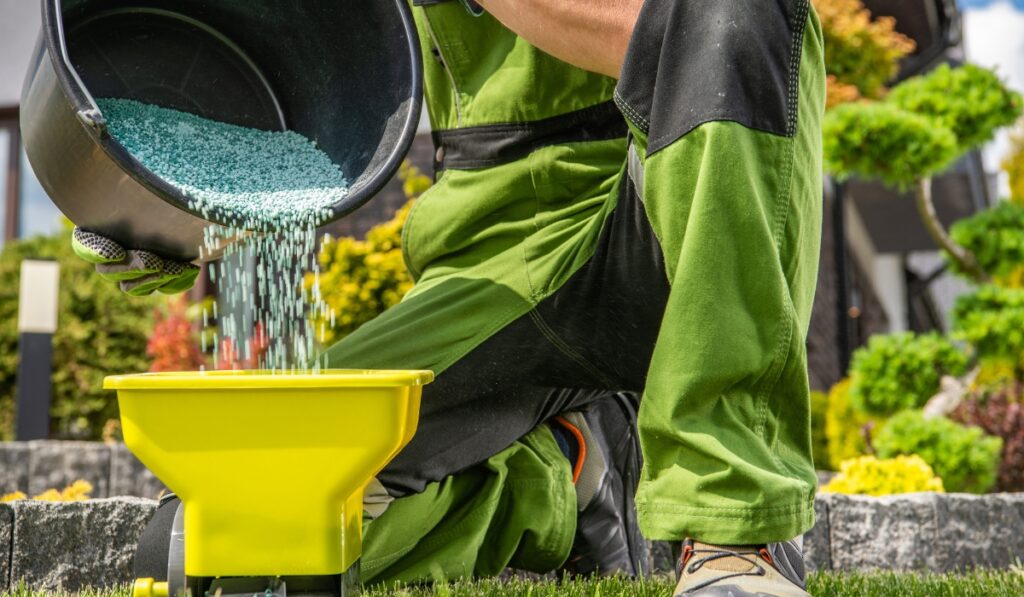Posts Tagged pruning
Essential Fall Clean-Up Tips for a Healthy Landscape

1. Remove Fallen Leaves Regularly
2. Cut Back Perennials and Clean Up Beds
3. Prune Trees and Shrubs
4. Refresh Mulch and Protect Roots
5. Prepare Your Lawn and Equipment
6. Plan Ahead for Spring
Let DK Landscaping Handle the Heavy Lifting
Pruning Perfection: DK’s Guide to Maintaining Healthy Plants

Pruning might seem like giving your plants a haircut, but it’s much more than just a cosmetic touch-up. It’s an essential practice for maintaining the health, vigor, and beauty of your garden. By strategically removing certain parts of a plant, you encourage healthy growth, remove dead or diseased branches, improve its overall shape and appearance, and even increase flower and fruit production. Think of it as a way to guide your plants towards their full potential!
Tools of the Trade
Before you start snipping away, it’s important to have the right tools for the job. Here are the essentials:
- Hand pruners: These are your go-to for smaller branches and stems.
- Loppers: Perfect for tackling larger branches that hand pruners can’t handle.
- Pruning saw: This comes in handy for thick branches or when you need to make more precise cuts.
Remember, using sharp, clean tools is crucial to prevent the spread of diseases. Think of it like surgery for your plants – you want to be as precise and hygienic as possible!
General Pruning Techniques
Pruning isn’t just about randomly chopping off branches. There’s a bit of an art to it! Here are some general principles to keep in mind:
- Make clean cuts: Avoid tearing or crushing the branches.
- Cut just above a bud or node: This encourages new growth in the desired direction.
- Avoid flush cuts: Don’t cut flush with the trunk or main branch, as this can damage the plant.
There are two main pruning techniques:
- Heading back: This involves cutting back to a bud to encourage bushier growth.
- Thinning out: This involves removing entire branches to improve air circulation and light penetration.
When it comes to timing, most plants benefit from pruning during their dormant season, typically in late winter or early spring. However, there are exceptions, so it’s always best to research the specific needs of your plants.
Pruning Specific Plant Types
Now, let’s dive into some specific plant types:
Roses
Pruning roses is essential for promoting those beautiful blooms we all love. Different types of roses have slightly different pruning needs. For example, hybrid tea roses generally require more vigorous pruning than floribundas. When pruning roses, aim to remove any dead, diseased, or crossing branches. Cut back the remaining canes to encourage new growth and shape the plant. The best time to prune roses in California is typically in January or February.
Ornamental Grasses
Ornamental grasses add a lovely texture and movement to any garden. Pruning them helps to remove dead foliage, maintain their shape, and encourage fresh new growth. You can generally cut back ornamental grasses with shears or comb out dead foliage with your hands. The ideal time to prune most ornamental grasses is in late winter or early spring, before new growth emerges.
Common Pruning Mistakes to Avoid
Even with the best intentions, it’s easy to make mistakes when pruning. Here are some common pitfalls to avoid:
- Pruning at the wrong time: This can stress the plant and reduce flowering.
- Over-pruning: Removing too much can weaken the plant and make it more susceptible to diseases.
- Making improper cuts: This can damage the plant and hinder its growth.
DK Landscaping: Your Pruning Experts
Pruning can seem daunting, but it doesn’t have to be! At DK Landscaping, our team of experts has the knowledge and experience to handle all your pruning needs. We understand the unique requirements of different plant types and can help you achieve a healthy and beautiful garden.
Ready to give your plants the expert care they deserve? Contact DK Landscaping today for all your pruning and garden maintenance needs! We’ll help you achieve Pruning Perfection!
Fall Landscaping Prep: Preparing Your California Yard for the Changing Season

As the summer sun begins to soften and the days grow shorter, it’s time to shift our focus to fall landscaping preparation. At DK Landscaping, we understand the importance of transitioning your yard smoothly into the cooler months, ensuring a healthy and beautiful landscape that thrives through winter and bursts with life come spring.
Cleaning Up Summer Debris
The first step in fall landscaping prep is a thorough cleanup. Remove any fallen leaves, spent flowers, and debris from your yard. This not only tidies up the space but also helps prevent pests and diseases from overwintering. Pay close attention to areas around trees and shrubs, where fallen leaves can accumulate and create a damp environment that encourages fungal growth.
Preparing Soil for Fall Planting
Fall is the perfect time to revitalize your soil and prepare it for new plantings. Incorporate organic matter like compost or well-rotted manure into your garden beds. This improves soil structure, drainage, and nutrient content, providing a nourishing environment for your plants to establish strong roots.
Protecting Plants from Early Frosts
While California enjoys relatively mild winters, early frosts can still occur, especially in inland areas. Take preventative measures to protect sensitive plants:
- Covering: Use frost blankets or burlap to cover tender plants during cold nights.
- Mulching: Apply a thick layer of mulch around the base of plants to insulate the roots and protect them from freezing temperatures.
- Moving Container Plants: Bring potted plants indoors or to a sheltered location to shield them from frost.
Additional Fall Landscaping Tips
- Lawn Care: Aerate your lawn to improve drainage and reduce compaction. Overseeding can help thicken thin or bare spots.
- Pruning: Prune summer-flowering shrubs and trees after they finish blooming to encourage new growth in the spring.
- Irrigation: Adjust your watering schedule to accommodate cooler temperatures and reduced plant needs.
- Pest and Disease Control: Monitor your plants for signs of pests and diseases, and take action as needed.
DK Landscaping: Your Partner in Fall Landscape Preparation
Preparing your landscape for fall can be a daunting task, but DK Landscaping is here to help. Our team of experienced professionals can assist with everything from debris removal and soil preparation to plant protection and winterization. We’ll ensure your yard is ready to face the changing seasons and emerge healthy and vibrant in the spring.
Contact us today for a free consultation and let’s get your landscape ready for a beautiful fall and winter.
Remember, fall is a time of transition and renewal in the garden. By taking the necessary steps to prepare your landscape now, you’ll set the stage for a thriving and beautiful garden in the seasons to come.
The Ultimate Guide to Year-Round Yard Cleanup and Maintenance

Maintaining a beautiful yard is a year-long commitment that requires careful planning and execution. With each season comes a new set of challenges and opportunities to enhance your outdoor space. This comprehensive guide will walk you through the essentials of year-round yard cleanup and maintenance, ensuring your garden thrives in harmony with the changing seasons.
Spring Awakening
As spring unfurls its fresh canvas, the awakening of your garden heralds a season of rebirth and rejuvenation. This period is pivotal for setting the tone for a flourishing garden throughout the year. Begin with a thorough cleanup, removing winter’s remnants—such as fallen branches, leaves, and other debris—to clear the way for new growth. Pruning plays a crucial role in spring; it not only shapes your plants but also promotes healthy development and blossoming. However, it’s essential to know which plants benefit from spring pruning, as timing can affect flowering and growth.
Aeration is another vital task; it alleviates soil compaction, allowing air, water, and nutrients to penetrate the grass roots, laying the groundwork for a vigorous lawn. Early spring is also the ideal time to rejuvenate your garden beds, preparing them for the season’s planting. Incorporating organic matter or compost improves soil health, providing a nutrient-rich environment for plants to thrive.
As new life sprouts in your garden, consider the layout and plan for seasonal additions. Early spring is an opportune moment to plant hardy annuals and perennials, which will establish themselves quickly in the cool, moist soil, ensuring a vibrant display as the seasons progress. By embracing these springtime rituals, you cultivate not just a garden but a sanctuary that grows in beauty and vitality with each passing year.
Summer Vigilance
In the height of summer, your garden enters a phase of intense growth and vitality, necessitating vigilant care to sustain its beauty and health. This period requires a proactive approach to weed management. Regularly removing weeds prevents them from competing with your plants for essential nutrients and water. Mulching becomes an indispensable ally, serving a dual purpose: it conserves soil moisture, crucial during the sweltering days, and acts as a natural barrier against the emergence of unwanted weeds.
Efficient water management is key during this time. Checking and adjusting your irrigation system ensures that your garden receives the right amount of water without waste, a critical consideration during times of potential drought. Adjusting watering schedules to the cooler parts of the day minimizes evaporation and maximizes the water’s benefit to your plants.
Mowing practices should adapt to the summer conditions as well. Keeping the grass at a slightly longer length than usual helps to protect the roots from the intense sun and heat, promoting a healthier, more resilient lawn. This approach not only enhances the green lushness of your garden but also supports its overall ecosystem, encouraging a balance between beauty and sustainability as the season unfolds.
Autumn Preparation
As autumn paints the landscape in vibrant hues, it’s a signal to start preparing your garden for the impending cold. This season is crucial for maintenance tasks that protect and invigorate your garden’s future growth. Raking and removing fallen leaves are essential to avoid mold and fungus, which thrive under damp, decomposing foliage. Autumn’s cool weather is also ideal for overseeding and fertilizing your lawn, setting the stage for robust, green growth when spring arrives.
Planting bulbs during this time promises the reward of early blooms, offering a burst of color at winter’s end. Additionally, autumn is when you should begin winterizing tasks, such as protecting sensitive plants from frost and preparing irrigation systems for the freeze, ensuring they remain functional for the next growing season. This proactive approach not only preserves your garden’s beauty and health through the winter but also lays the groundwork for a flourishing landscape in the year ahead.
Winter Care
Winter’s quiet might suggest a pause in garden activity, but it’s actually a critical period for protective measures and forward planning. Wrapping plants in burlap or frost cloths shields them from the harshest winter elements, preserving your garden’s vitality. This dormant season offers a valuable opportunity for reflection and strategy: assess the past year’s successes and areas for improvement. It’s a perfect time to dream up new garden layouts or consider different plant varieties that could enhance your garden’s diversity and resilience. Planning during these colder months ensures that you’re ready to spring into action when the weather warms, with a clear vision for your garden’s future.
Goodbye Summer. Hello Autumn!

Autumn is officially here in Sonoma County! When we think of the season, we think of vibrant foilage, crunchy leaves, the smell of crisp sweet air, pumpkins, hot apple cider and Halloween. But as we get further into the season, the sunlight begins to wane, the nights are chillier, our trees are more bare and the landscape looks tired. It’s easy for us at this point to hang up our boots, turn our backs on our landscape and take up shelter for warmth. But the reality is that Autumn is the most ideal time to tend to our lawns and prepare it for the harsh winter ahead to ensure it’s in the best of health for a springier spring. Here are DK Landscaping’s top tips to winterize your landscape:
Mow & Mulch
Mow your lawn into the fall and avoid removing more than one-third of the leaf blades with each cut. Return grass clippings and back to the soil for added lawn nutrients and use tree leaf compost to nourish plants. That will allow more sunlight to reach the crown of the grass, and there will be less leaf to turn brown during the winter.
Aerate & Prune
Aerating is a lawn process that puts small holes into the ground to allow air, water, and nutrients to transcend into the ground and allows you to remove unwanted weeds from manifesting. Help your lawn breathe through fall core aeration to strengthen roots and to prepare for a hardy spring workout. Conduct corrective pruning of trees and shrubs in fall to enhance plant appearance and vigor, and thin rather than top-shear and overgrown shrubs and flowering trees to preserve their overall shape.
Rake those Leaves
Don’t wait until all the leaves have fallen from the trees to start raking. If you do, the leaves will become wet from rain and morning dew, stick together and form an impenetrable mat that, if left there, will suffocate the grass and breed fungal diseases.
Feed for the Winter
A good fall feeding gives roots of lawns, trees and shrubs the energy needed to prepare for a healthy spring green revival. Keep fertilizer on target to prevent run-off and sweep fertilizer granules that may reach pavement back onto your lawn.
DK Landscaping is your Sonoma County lawn experts. We have all the tools, experience and are backed by 10 years trusted guaranteed service. Give us a call so we can help make your lawn beautiful! For a full list of services, please contact Kathy Lee at (707) 280-3632 or contact us by email, davidmunlee@aol.com.
Got Curb Appeal?
First impressions are everything! The same concept holds true when speaking about your landscape. From a real estate perspective, a good first impression, aka “curb appeal” is about using your landscape to enhance the appearance of your home. Whether you want to boost your curb appeal, market the value of your home or simply want to transform your space to make your lawn & garden look pristine, DK Landscaping helps you come up with the inspiration for the look you desire and making your property the talk of the neighborhood:

Here are a few simple ways to enhance and maintain your landscape:
General maintenance: Mowing your lawn, pruning back trees/shrubs weeding, fertilizing, mulching, leaf and debris-free to watering will keep your yard looking beautiful and eye-catching throughout the entire growing season.
Visually inviting entryway: There are a lot of little things you can do to spruce up your front entryway including keeping it debris free. If you have an old, dull concrete stoop with cracks? Update to a beautiful stone stoop or porch.
Providing a focal point: Plantings, landscape lighting like lamp posts, and decorative pieces like a small water fountain are good ideas.
Colorscape: Adding a splash of vibrant annuals and perennials flowers and plants will make a big statement.
Landscaping lighting: A small yet impactful solution, outdoor accent lighting can not only enhance your yard aesthetically but also eliminate any dark, shadowy areas at night and prevent any safety hazards.
Updated driveway and/or walkway: If your driveway is old and outdated or starting to crack, updating it can have a big impact. There are pavers that imitate any stone for driveway landscaping—brick, travertine, limestone, etc. Same goes for any walkway in your yard. A new stone or paver walkway is a great front landscaping idea.
Stairways: Like retaining walls, stairs are ideal for hilly yards. Adding a staircase walkway to your sloped yard is a great way to add curb appeal—and give your visitors easier access to your door.
It is pretty easy to do many of these things yourself, but perhaps your front yard is devoid of plants and eye-catching features. You may consider planting a tree as a focal point, installing a trickling fountain, or even building a patio. In addition to these memorable details, it is important to use color to attract and focus attention on positive attributes of the landscape. This not only requires planning, but you may need a landscaping company to see some of these designs through.
Having good curb appeal makes selling your house easier, as potential buyers are looking for an aesthetically pleasing home. But don’t brush off having curb appeal even if you are not putting your house on the market. An attractive landscape design is always important!
Springing Forward

Spring is an exciting and one of the most beautiful times of the year. The days are becoming longer, the weather is getting warmer, you awake to birds chirping in the morning, and spring blooms and lush green plants come alive in your landscape.
After a long winter, your lawn and gardens may be looking a big ragged and dreary. So before you pull out your lawn furniture from storage, get in the “spring spirit” by getting your yard looking spectacular. Help your lawn, trees and shrubs get off to a healthy growing season with these six luscious landscaping tips:
1. ASSESS YOUR TOOLS: Check, maintain, sharpen and repair your landscaping tools for a smooth spring and summer experience. This includes your lawnmower, weeding/pruning tools, rake and edger.
2. CLEAN UP: Clean out dead leaves, branches, trash or anything else that could impair your garden and lawn’s growth. Prune
3. WEED CONTROL: Uproot any existing weeds you find out of flower beds and check your lawn for any weed growth, whether they’re leftover stalks from last year or brand-new shoots. Once weeds are clear, DK Landscaping recommends spending between 10-15 minutes a few times per week to prevent new weed growth in your garden.
4. FERTILIZE: Make sure your early spring fertilizer has less nitrogen and more phosphorus to promote strong roots. Be sure to keep fertilizer on target to prevent run-off, and sweep fertilizer granules that may reach pavement back onto your lawn. Give your lawn a slow, steady watering about once a week, but adjust depending upon rainfall, grass and soil type in your area.
5. MULCH: A fresh layer of mulch can take any flower bed from drab and dreary to beautiful. DK Landscaping suggests applying four inches of mulch over the top soil, which will help retain moisture and prevent growth of those pesky weeds.
6. IRRIGATION: Check your in-ground sprinkler system and make sure all your sprinklers are working properly. Remove any overgrown grass that may have covered up any part of the pop-up heads. Check the sprinkler heads for cracking and breakage from last year and have them replaced if needed.
It’s the perfect time in Northern California to gather up tools, slide into your boots, pull on your garden gloves, and enjoy that first breath of spring.
DK Landscaping specializes in landscape maintenance, irrigation, clean-up and colorscape in Sonoma County. Contact Kathy or David Lee for more information and a consultation on your landscaping (707) 280-3632.





